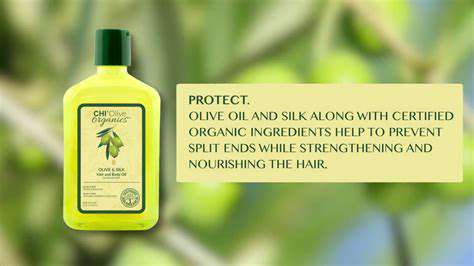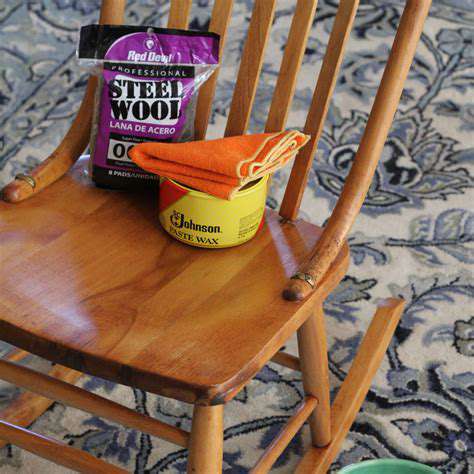How to make wooden furniture shine without harmful chemicals
Understanding the Appeal of Polished Wood Finishes
There's something undeniably captivating about polished wood finishes. Whether it's the rich, deep glow of mahogany or the subtle sheen of oak, these surfaces have a way of drawing the eye and inviting touch. The secret lies in how light dances across the grain, revealing hidden patterns and textures that make each piece unique. Unlike synthetic materials, wood develops character over time, with its finish acting as both protector and enhancer of its natural beauty.
The Environmental Advantages of Chemical-Free Polishing
In today's eco-conscious world, many homeowners are rethinking traditional wood care methods. Conventional polishes often contain harsh chemicals that linger in our homes and environment. Natural alternatives like beeswax and plant-based oils offer comparable protection without the toxic side effects. These solutions not only safeguard your family's health but also contribute to broader environmental preservation efforts. The difference is particularly noticeable in indoor air quality, where chemical-free options prevent the release of harmful VOCs.
Preparing the Wood for a Polished Finish
Success begins with proper preparation. I've found that spending extra time on this stage makes all the difference in the final result. Start by thoroughly cleaning the surface - dust and debris are the enemies of a smooth finish. Then comes sanding, which should progress methodically from coarse to fine grits. This gradual approach removes imperfections while creating the ideal surface for polish absorption. Don't rush this process; patience here pays dividends in the finished product's quality and durability.
Selecting the Right Chemical-Free Polishing Agents
The market offers an array of natural polishing options, each with unique characteristics. Tung oil, for instance, penetrates deeply and offers excellent water resistance, while carnauba wax creates a harder, more durable surface. The key is matching the product to both your wood type and desired aesthetic. For antique pieces, I often recommend a blend of beeswax and citrus oil, which nourishes while maintaining historical authenticity. Modern furniture might benefit more from the sleek protection of pure tung oil.
Applying the Polished Finish for Optimal Results
Application technique significantly impacts the final outcome. Contrary to popular belief, more polish doesn't equal better results. Thin, even coats applied with the grain yield the most professional-looking finish. Between coats, allow proper drying time - rushing this stage can lead to cloudiness or uneven texture. For hand-rubbed finishes, I prefer using lint-free cotton cloths and circular motions, gradually building up layers until achieving the desired sheen.
Maintaining Your Polished Wood Finish
Proper maintenance transforms a good finish into a lasting one. Regular dusting with microfiber cloths prevents abrasive particles from dulling the surface. Every few months, a light reapplication of polish revitalizes the protective layer. For heavily used surfaces like dining tables, consider quarterly maintenance. The beauty of natural polishes is their cumulative effect - each application enhances rather than masks the wood's inherent character.
Essential Tools and Materials for Natural Polishing
Choosing the Right Abrasive
Sandpaper selection can make or break your polishing project. I recommend keeping a range from 80 to 400 grit on hand. The progression from coarse to fine grits is crucial for removing imperfections without creating new ones. For delicate work or between-coat smoothing, 0000 steel wool offers gentle abrasion. Recently, I've had excellent results with synthetic abrasive pads - they last longer than sandpaper and create less dust.
Preparing the Surface
Surface preparation goes beyond simple cleaning. Start by examining the piece under different lighting angles to identify problem areas. Filling cracks and dents with matching wood putty before sanding ensures a flawless base. For pieces with intricate carvings, dental tools or stiff-bristle brushes help remove accumulated grime. Always finish with a tack cloth to eliminate every speck of dust - it's astonishing how visible even microscopic particles become under polish.
Essential Polishing Compounds
Beyond the standard oils and waxes, consider experimenting with specialty compounds. Shellac flakes dissolved in alcohol create a beautiful traditional finish, while walnut oil offers food-safe protection for cutting boards. My personal favorite is a homemade blend of beeswax, carnauba wax, and jojoba oil - the combination provides both depth of shine and lasting protection. Always test new products on scrap wood or inconspicuous areas first.
Applying the Polish
Application tools matter as much as the polish itself. For oils, I prefer natural bristle brushes that help work the product into the grain. Wax applications benefit from cheesecloth or old t-shirt fabric. The temperature of your workspace affects application - warmer conditions help thinner products penetrate, while cooler temps are better for viscous waxes. Always work in manageable sections to maintain wet edges and prevent lap marks.
Maintaining Your Polished Furniture
Establishing a maintenance routine preserves your hard work. Weekly dusting should become as habitual as making your bed. For monthly care, a light buffing with a clean, dry cloth reactivates the wax or oil. Annually, consider a deeper refresh - clean with a mild solution, lightly sand any rough spots, and reapply your chosen polish. This cyclical care keeps wood looking its best for generations.
The Power of Olive Oil for a Natural Shine

The Rich History and Versatility of Olive Oil
Olive oil's legacy spans millennia, with ancient civilizations valuing it as highly as gold. Today, we're rediscovering its multifaceted uses beyond the kitchen. When combined with beeswax, it creates a nourishing wood polish that enhances grain while conditioning the fibers. This dual-action approach protects while beautifying, making it ideal for heirloom pieces that require gentle care.
Nutritional Benefits and Health Impacts
The same properties that make olive oil beneficial for our bodies also benefit wood. Its high oleic acid content penetrates wood cells, preventing drying and cracking. Unlike synthetic alternatives, olive oil won't create a surface film that can cloud or peel over time. For households with children or pets, this natural solution provides peace of mind alongside beautiful results.
Culinary Applications and Flavor Profiles
Interestingly, the qualities we prize in cooking olive oil - freshness, purity, and acidity levels - similarly affect its polishing performance. Extra virgin varieties, with their higher antioxidant content, offer superior protection against oxidation in wood. The fruity notes in premium oils don't translate to scent in the finished product, but do indicate higher quality that benefits your furniture.
Health Benefits Beyond the Heart
Olive oil's benefits extend to your home environment. Unlike petroleum-based products, it doesn't off-gas harmful chemicals. Its natural composition actually improves with age, forming a harder, more protective surface over time. This makes it particularly suitable for frequently handled items like stair railings or chair arms.
Choosing the Right Olive Oil for Your Needs
Not all olive oils work equally well for wood care. Avoid anything labeled light or pure, as these often contain solvents. Cold-pressed, unfiltered extra virgin olive oil delivers the best results, though it may require more frequent application than commercial polishes. For a longer-lasting finish, mix with beeswax in a 1:1 ratio by volume.
Sustainability and Production Practices
When selecting olive oil for wood care, consider its origin. Locally sourced oils often have a smaller carbon footprint than imported commercial polishes. Many small-scale producers use traditional methods that align perfectly with eco-conscious wood care philosophies. Supporting these businesses creates a virtuous cycle of sustainability.
Maintaining Your Polished Wooden Furniture

Protecting Against Damage
Prevention is the cornerstone of wood care. Simple habits like using coasters and placemats can prevent 90% of common damage. I recommend keeping felt pads under decorative objects that sit on wood surfaces - they prevent scratches while allowing the piece to breathe. For homes with children or pets, consider applying an extra coat of wax to high-traffic areas as added protection.
Cleaning and Polishing
The golden rule of cleaning? Less is more. A barely damp microfiber cloth removes most daily grime without risking water damage. For tougher spots, a paste of baking soda and water applied gently with a soft cloth often does the trick. Always follow cleaning with a light application of your chosen polish to replenish protective oils.
Addressing Scratches and Marks
Minor scratches often respond beautifully to simple solutions. For light surface marks, rubbing a walnut kernel along the scratch can work wonders - the natural oils darken the exposed wood fibers. Deeper gouges might require a colored wax filler stick, available in various wood tones. Remember that some wear adds character - not every imperfection needs correction.
Regular Maintenance and Prevention
Seasonal changes affect wood differently. Humid summer months might require more frequent dusting to prevent sticky buildup, while dry winters benefit from extra polish applications. Keeping a maintenance log helps track what works best for your specific pieces and local climate. This proactive approach prevents small issues from becoming major repairs.
- Top trends in modern wooden furniture for small spaces
- How to clean and polish solid wood furniture naturally
- How to choose the perfect wooden dining table for your space
- The Timeless Appeal and Benefits of Wooden Rocking Chairs
- How to combine wood furniture with bold interior colors
- How to blend wooden furniture with colorful décor
- How to match wooden furniture with vintage home accents
- How to decorate a dining room with elegant wooden furniture
- How to mix and match wooden furniture for a contemporary look
- How to pick the right wooden bookshelf for your study
- How to decorate your living room with light wood furniture
- The best care routines for keeping your wooden furniture in top shape